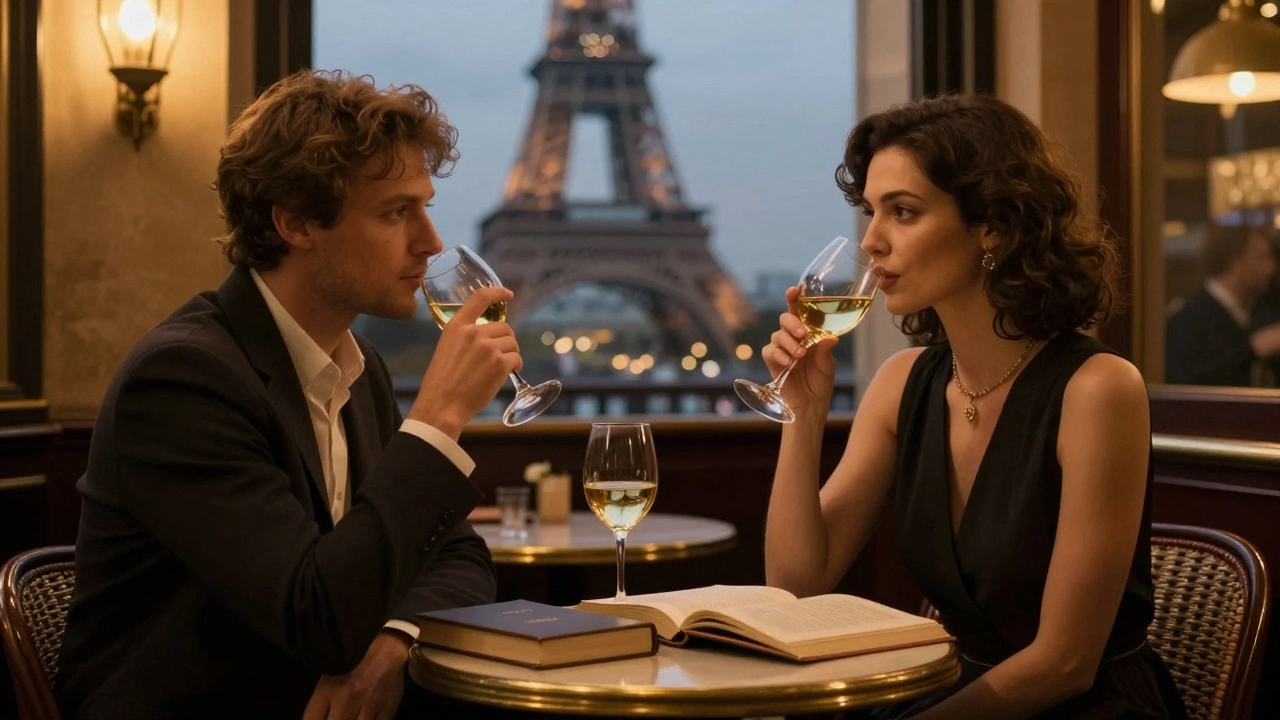By late 2025, the American dining scene had quietly turned inward—not toward isolation, but toward connection. People weren’t just eating; they were gathering, sharing, and reclaiming meals as moments of human contact. The evidence wasn’t in fancy marketing campaigns, but in the numbers: OpenTable’s annual Top 100 Restaurants list, released November 21, 2025, revealed a dining culture reshaped by intimacy, timing, and heritage. More diners booked tables at 4 p.m. than at 9 p.m. Resy data showed that the 5 p.m. to 6 p.m. window outpaced the entire 8 p.m. to 11 p.m. stretch. Dinner, it seemed, was no longer a nightcap—it was a prelude to life.
The Rise of the Shared Table
Forget solo entrees. The most talked-about dishes of 2025 were meant to be passed around. At Place des Fêtes in New York City, crispy maitake mushrooms arrived in a communal bowl, their earthy crunch drawing strangers into conversation. At Golden Diner, pancakes weren’t just breakfast—they were a ritual, drizzled with maple and shared among friends who’d met for the first time that evening. In San Francisco, Good Good Culture Club made Mom’s Lao Sausage a star, its spicy, fermented pork wrapped in rice paper and served with pickled greens. These weren’t gimmicks. They were responses to a hunger for belonging.
Even the drinks followed suit. The "tiny 'tinis"—a two-to-three-sip cocktail served in delicate glassware—became a signature of the year. At Pastis in New York, Vern’s in Charleston, and The Fox Bar in Nashville, patrons sipped chilled, precise drinks not to get drunk, but to savor the moment. "It’s not about volume," said one bartender in Nashville. "It’s about attention. You can’t rush a three-sip experience."
Earlier Dinners, Deeper Connections
The shift to 5 p.m. dinners wasn’t just about avoiding crowds. It was about reclaiming time. Families with young children, remote workers wrapping up calls, and even retirees began dining earlier—not because they had to, but because they wanted to. "People are choosing to eat with their people, not just after their people go home," noted a hospitality analyst from Total Food Service in its November issue. The result? Restaurants reported higher table turnover, longer dwell times, and increased repeat visits. The 9 p.m. crowd didn’t vanish—it just got smaller, more selective, and often more expensive.
Technology didn’t drive this—it enabled it. Apps like OpenTable and Resy streamlined reservations, letting diners lock in early slots with ease. But the real innovation was in the design: fewer private rooms, more communal tables, open kitchens where chefs could wave to guests, and servers who knew names by the second visit. "It’s not about the food alone," said a server at The Progress in San Francisco. "It’s about being seen."
Cultural Cuisines Take Center Stage
2025 was the year American diners stopped treating regional cuisines as exotic and started treating them as essential. Diane’s Place in Minneapolis, Minnesota, earned Food & Wine’s Best New Restaurant award for its deeply personal menu of Cambodian, Lao, and Hmong dishes—many passed down from the owner’s grandmother. At Tâm Tâm in Miami, the Lamb Wrap Situation became a viral sensation, its spiced lamb tucked into flatbread with pickled radish and mint yogurt. And in Los Angeles, Kismet’s tahdig—the crispy, golden rice crust from Persian cooking—wasn’t just a side dish. It was a centerpiece, served with reverence.
Mortadella, the Italian cold cut made from ground pork, peppercorns, and sometimes pistachios, showed up everywhere—from deli counters to upscale charcuterie boards. It wasn’t just a trend. It was a signal: Americans were seeking authenticity over novelty. "We’re not chasing flavors anymore," said chef Elena Ruiz in a Nation’s Restaurant News interview. "We’re chasing memory."

The Top 100: California’s Quiet Dominance
OpenTable’s 2025 list, drawn from over 10 million verified reviews between September 1, 2024, and August 31, 2025, crowned California as the epicenter of culinary excellence. Eighteen of the top 100 restaurants were in the state, six in the Bay Area alone. House of Prime Rib, a San Francisco institution since 1949, made the list despite the quiet passing of its longtime owner, Joe Betz, in September 2025 at age 86. His legacy lived on in the slow-roasted beef and the same silverware used since the 1960s.
Other Bay Area standouts included Kokkari Estiatorio, with its candlelit Greek ambiance; Gary Danko, still serving French classics after 26 years; and The Progress, the Michelin-starred sibling to State Bird Provisions, known for its BBQ Liberty Farms duck and ever-changing small plates. Outside the city, SingleThread Restaurant & Inn in Healdsburg—where 24 acres of farm feed a kaiseki-inspired tasting menu—held three Michelin stars. And in industrial West Oakland, Sun Moon Studio, a 12-seat jewel, served egg tarts with salmon roe and Dungeness crab with yuzu kosho butter, turning a former warehouse into a temple of taste.
What’s Fading—and What’s Left Behind
Not all trends survived. Be Home Soon, a tiny East Dallas cocktail bar that experimented with avant-garde tasting menus, shuttered in November 2025, a casualty of rising rents and shifting customer expectations. "People don’t want to be wowed anymore," said owner Mark Delaney before closing. "They want to be held."
In Los Angeles, chef Kevin Meehan of Kali published his personal list of favorite meals—from a taco truck in East LA to a $120 hotel dining experience. "The best meal I had this year was at a bus stop in Boyle Heights," he wrote in LA Magazine. "No reservation. No menu. Just perfect carnitas and a guy who asked if I wanted extra onions."

What Comes Next
2026 will likely see more restaurants adopting "early dining" as a core strategy, with prix-fixe menus designed for 5 p.m. crowds. Expect to see more heritage kitchens—Lao, Hmong, Filipino, and Indigenous American cuisines—entering mainstream menus. The "tiny 'tini" may evolve into "tiny bites," a new category of pre-dinner snacks. And while technology will keep improving reservations and table management, the real competition won’t be digital. It’ll be emotional. Can you make someone feel at home? That’s the new Michelin star.
Frequently Asked Questions
Why are people dining earlier in 2025?
Diners are choosing earlier meals—5 p.m. to 6 p.m.—because they’re prioritizing connection over spectacle. Families, remote workers, and older adults are reclaiming dinner as a time to be present, not just to eat. Resy data shows this window now outperforms the traditional 8–11 p.m. rush, suggesting a cultural shift toward slower, more intentional dining.
What makes OpenTable’s Top 100 list different this year?
Unlike past years, the 2025 list was heavily influenced by reviews emphasizing emotional experience, not just food quality. Diner ratings now weigh "sense of belonging," "staff attentiveness," and "shared meal satisfaction" alongside traditional metrics. Over 10 million reviews from September 2024 to August 2025 were analyzed, with early-bookers and repeat visitors given extra weight.
How did Cambodian and Lao cuisines break into the mainstream?
Diane’s Place in Minneapolis won Food & Wine’s Best New Restaurant 2025 for its deeply personal Lao and Cambodian menu, sparking national media coverage. Chefs began sourcing ingredients like fermented pork sausage and bitter herbs, while diners sought out dishes tied to immigrant family stories. This wasn’t fusion—it was reverence. The trend spread as food bloggers and TikTok creators highlighted the authenticity, not the novelty.
Why is mortadella suddenly everywhere?
Mortadella, a slow-cured pork sausage with peppercorns and pistachios, became a symbol of craftsmanship in a fast-food world. Restaurants began serving it as a centerpiece—not just on charcuterie boards, but in sandwiches and even as a topping on pizza. Its resurgence reflects a broader hunger for slow-made, regional Italian traditions, especially among Gen Z and millennial diners seeking substance over trends.
What’s the future of the "tiny 'tini" cocktail trend?
The "tiny 'tini"—a two-to-three-sip cocktail—is evolving into "micro-experiences," where drinks are paired with small bites to create a full sensory moment. Bars are experimenting with temperature, glassware, and even scent to enhance the ritual. It’s less about alcohol content and more about mindfulness. Expect this trend to expand beyond cocktails into tea, non-alcoholic spirits, and even coffee pairings.
Will earlier dining hours become permanent?
Yes. Restaurants are already redesigning menus, staffing, and kitchen workflows for 5 p.m. service. Some are offering "Sunset Tasting" menus with wine pairings timed to golden hour. The shift isn’t just about convenience—it’s about aligning dining with how people actually live now: working remotely, raising kids, and valuing time over quantity. The 9 p.m. crowd isn’t gone—it’s just become a luxury experience.


